Effective Driveway Algae Removal in Bexleyheath

Driveway algae can be a persistent and unsightly issue for homeowners in Bexleyheath. Not only does it detract from the aesthetic appeal of your property, but it can also make your driveway slippery and hazardous. Understanding the causes, prevention methods, and effective removal techniques is essential for maintaining a clean and safe driveway.
Algae thrive in damp, shaded environments, which are common conditions around driveways. Bexleyheath's climate provides the perfect setting for algae growth, especially during the cooler, wetter months. Without proper maintenance, these green patches can quickly spread, leading to more extensive problems.
Fortunately, there are several strategies you can employ to remove algae from your driveway and prevent its return. From chemical treatments to eco-friendly solutions, homeowners have a variety of options to choose from based on their preferences and environmental concerns.
Understanding Driveway Algae

Algae are simple, plant-like organisms that can grow on various surfaces, including concrete, paving stones, and asphalt driveways. They require moisture, shade, and organic material to thrive. In Bexleyheath, the combination of these factors often leads to rapid algae growth.
There are different types of algae that can affect driveways, each with its own characteristics. Green algae are the most common and are easily recognized by their vibrant color. These organisms produce spores that can spread quickly, making them difficult to control once established.
While algae themselves are not harmful to your driveway, their presence can indicate moisture issues and can make surfaces slippery, posing a risk to both residents and visitors.
Causes of Algae Growth on Driveways
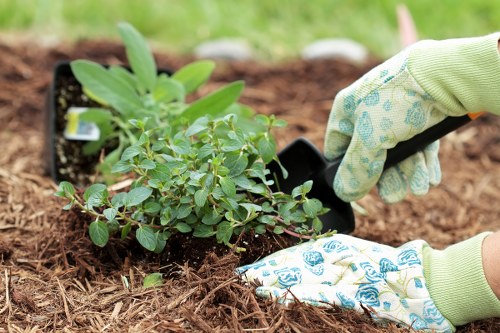
Several factors contribute to the growth of algae on driveways:
- Moisture: A wet environment is essential for algae to survive and spread.
- Shade: Areas with limited sunlight provide the perfect conditions for algae to thrive.
- Organic Material: Debris such as leaves and dirt can serve as food sources for algae.
- Temperature: Cooler temperatures during spring and autumn can promote algae growth.
Addressing these factors can help in preventing algae from becoming a recurring problem. Ensuring proper drainage, reducing shade, and maintaining cleanliness around the driveway are effective preventive measures.
Additionally, regular maintenance and inspections can help identify early signs of algae growth, allowing for prompt action to prevent extensive spread.
Methods for Algae Removal
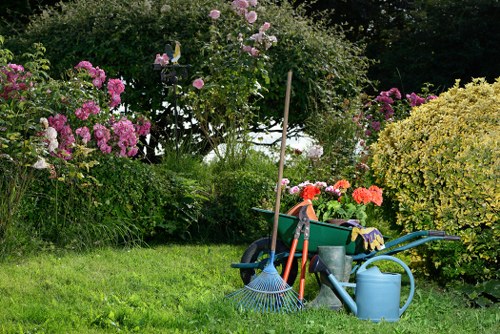
Removing algae from your driveway can be achieved through various methods, each with its own advantages and considerations:
1. Chemical Cleaners
Chemical treatments are among the most effective ways to eliminate algae. Products containing bleach or other harsh chemicals can kill algae spores on contact. However, it's important to use these products carefully to avoid damaging your driveway or harming surrounding vegetation.
2. Eco-Friendly Solutions
For environmentally conscious homeowners, there are eco-friendly alternatives available. Vinegar, baking soda, and other natural substances can be used to remove algae without the negative side effects associated with chemical cleaners.
3. Pressure Washing
Pressure washing is a powerful method that can effectively remove algae and other debris from your driveway. It uses high-pressure water to blast away algae, leaving the surface clean. However, it's important to use the correct pressure to avoid damaging the driveway material.
Preventing Future Algae Growth

Prevention is always better than cure, and this holds true for algae growth on driveways. Implementing preventive measures can save you time, effort, and money in the long run.
Here are some effective strategies to prevent algae from returning:
- Improve Drainage: Ensure that water does not pool on your driveway by addressing any drainage issues.
- Reduce Shade: Trim overhanging branches and remove obstacles that block sunlight, creating a less favorable environment for algae.
- Regular Cleaning: Keep your driveway free from debris and regularly clean it to prevent algae from finding a foothold.
- Seal Your Driveway: Applying a sealant can create a barrier that inhibits algae growth by reducing moisture absorption.
Implementing these measures can significantly reduce the likelihood of algae returning, ensuring that your driveway remains clean and safe.
Additionally, regular inspections and prompt action at the first sign of algae can prevent minor issues from escalating into major problems.
Choosing the Right Professional in Bexleyheath

While DIY methods can be effective, sometimes professional help is necessary, especially for extensive algae growth. Choosing the right professional in Bexleyheath ensures that the job is done efficiently and effectively.
When selecting a service provider, consider the following factors:
- Experience: Look for a company with a proven track record in algae removal.
- Reputation: Check reviews and testimonials to gauge customer satisfaction.
- Eco-Friendly Options: If you prefer green solutions, ensure the company offers eco-friendly treatments.
- Pricing: Compare quotes to find a service that fits your budget without compromising quality.
- Guarantees: A reputable company should offer guarantees on their work.
Investing in professional services can provide peace of mind and ensure that your driveway remains algae-free for an extended period.
Maintenance Tips for Long-Lasting Cleanliness
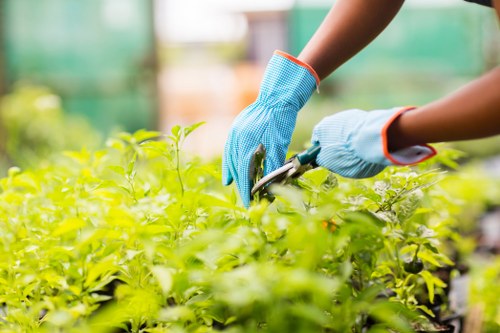
Maintaining a clean driveway requires consistent effort. Here are some maintenance tips to keep algae at bay:
- Regular Sweeping: Remove leaves and debris that can trap moisture.
- Immediate Spill Cleanup: Address spills promptly to prevent moisture accumulation.
- Seasonal Treatments: Apply preventive treatments in spring and autumn when algae growth is most likely.
- Repair Cracks: Fix any cracks in the driveway surface to prevent water seepage.
By following these tips, you can maintain a clean and safe driveway year-round. Consistency is key to preventing algae from becoming a recurring problem.
Additionally, staying proactive with maintenance can extend the lifespan of your driveway, saving you from costly repairs in the future.
Local Expertise in Bexleyheath
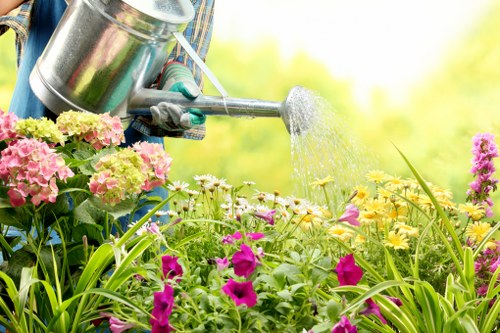
Bexleyheath is surrounded by several areas that also experience similar algae-related issues. Understanding the local landscape can help homeowners identify common problems and seek appropriate solutions.
Here are some nearby areas to consider:
- Lower Bexley: Just south of Bexleyheath, this area shares similar climatic conditions, making algae removal essential.
- Crayford: Known for its residential neighborhoods, Crayford often requires professional driveway maintenance services.
- Barnehurst: With a mix of old and new properties, Barnehurst faces diverse algae challenges.
- Welling: Welling's busy streets can lead to higher debris accumulation, promoting algae growth.
- Bexley: Close to Bexleyheath, Bexley experiences similar weather patterns conducive to algae.
- Sidcup: As a bustling area, Sidcup requires regular driveway cleaning to manage algae effectively.
- Laurel Hill: This area benefits from proactive maintenance practices to prevent algae.
- Falconwood: Falconwood's climate makes it another hotspot for driveway algae issues.
- Woolwich: Although a bit further, Woolwich shares environmental factors that affect algae growth.
- Eltham: Eltham's lush greenery can contribute to moist conditions favorable for algae.
- Slade Green: Slade Green residents often seek professional algae removal services for their driveways.
- Chislehurst: Chislehurst's historical homes may require specialized cleaning techniques for algae removal.
- Kwelm Creek: Kwelm Creek's unique layout might necessitate tailored algae prevention strategies.
- Sidcup Grove: Known for its well-maintained properties, Sidcup Grove focuses on preventing algae growth.
- Sidcup Haling Park: This area emphasizes eco-friendly algae removal methods to preserve its natural surroundings.
Each of these areas has its own unique characteristics that influence algae growth and the best methods for removal. Homeowners can benefit from understanding these local nuances when addressing algae-related driveway issues.
By engaging with local professionals who are familiar with the specific conditions in these areas, homeowners can ensure effective and lasting algae removal.
Conclusion
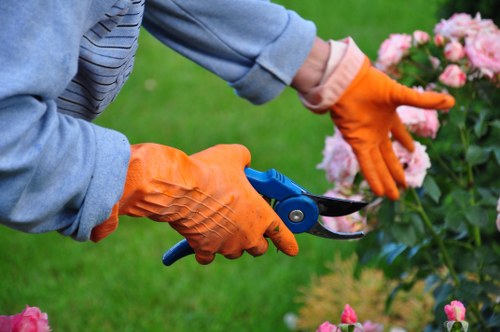
Maintaining a clean driveway free from algae is essential for both the appearance and safety of your property in Bexleyheath. By understanding the causes of algae growth, employing effective removal methods, and implementing preventive measures, you can ensure that your driveway remains in excellent condition year-round.
Whether you choose to tackle the problem yourself or seek professional assistance, the key is consistency and proactive maintenance. With the right strategies, you can enjoy a beautiful and safe driveway without the worry of persistent algae issues.
Remember to consider local factors and engage with professionals who understand the specific needs of Bexleyheath and its surrounding areas. This approach will help you achieve the best results and maintain the integrity of your driveway for years to come.
Frequently Asked Questions
1. How often should I clean my driveway to prevent algae growth?
Regular cleaning, at least twice a year, especially during spring and autumn, can help prevent algae from establishing itself on your driveway.
2. Are eco-friendly algae removal methods as effective as chemical treatments?
Yes, eco-friendly methods like vinegar and baking soda can be effective for minor algae growth and are safer for the environment. For extensive growth, professional chemical treatments might be necessary.
3. Can algae damage my driveway permanently?
While algae itself doesn't damage the driveway, the moisture it retains can lead to surface degradation over time if not addressed promptly.
4. Is it necessary to hire a professional for algae removal?
For minor algae issues, DIY methods can suffice. However, for extensive growth or recurring problems, hiring a professional ensures thorough and long-lasting removal.
5. How can I prevent algae from returning after removal?
Implement preventive measures such as improving drainage, reducing shade, regular cleaning, and sealing your driveway to minimize moisture absorption.


